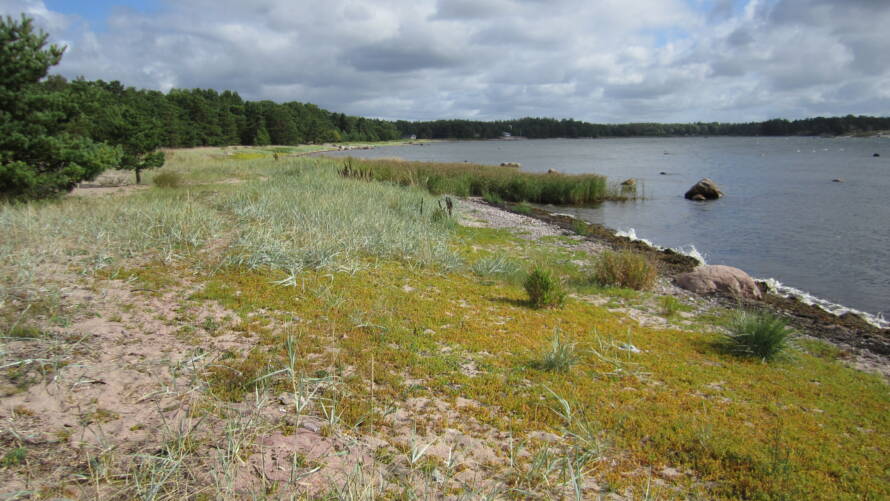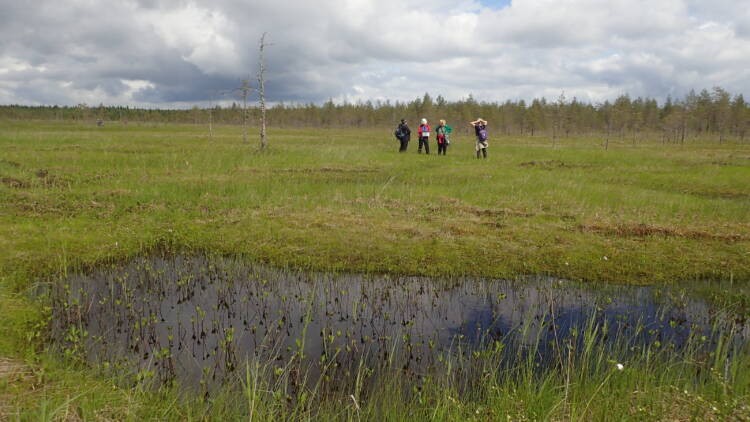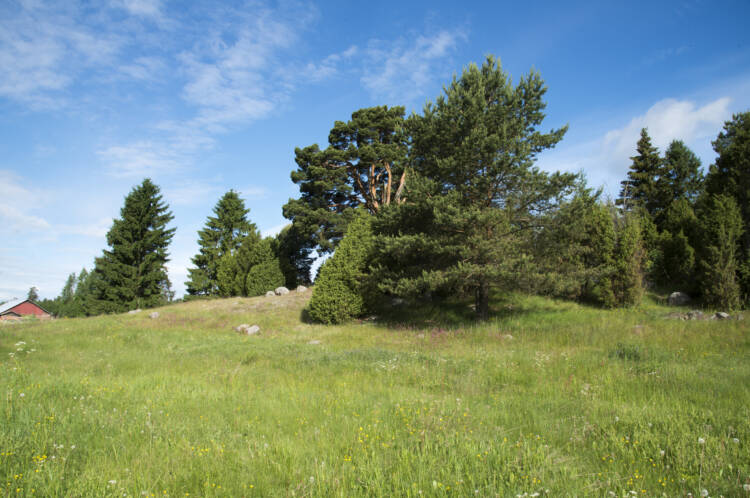Habitat monitoring
In habitat-level monitoring, the focus is on the communities formed by species as well as the characteristics describing the functioning and structure of the ecosystem. The condition of habitats can be monitored either through field inventories or remote sensing methods.

On this page:
- Habitat monitoring
- Information on existing monitoring schemes on habitat types
- Monitoring of habitats in Finland
- Sources
Habitat monitoring
In monitoring the habitats, the target is the communities formed by the species and the characteristic features that describe the functioning and structure of the ecosystem. Monitoring of habitat types and their condition in Finland is so far limited, and the threat of habitat types has been assessed twice (Kontula & Raunio 2018) based on relatively little quantitative information.
The state of the habitats can be monitored either through field inventories or remote sensing methods. Modern monitoring combines both of these so that field observations confirm the interpretation made with remote sensing. With the help of observation points, artificial intelligence can be taught to interpret satellite images or other data, for example about changes in tree species or moisture balance, even across the whole of Finland. Terrain observation, however, has retained its position as a key monitoring method that cannot be completely replaced by new technologies. In the future, new technology can also be used in the field, such as eDNA methods, which tell about the biodiversity of the area with the help of DNA residues in the environment.

Information on existing monitoring schemes on habitat types
National Forest Inventory (VMI)
National Forest Inventory (VMI) produces information covering the entire country, focusing on
- amount of trees
- tree growth
- logging possibilities
The National Forest Inventory also produces some information about the natural state and structural characteristics of forests and peatlands. Based on systematic sampling, VMI produces reliable information about the most common types of forests and peatlands, but little information about rarer habitat types is collected. For example shore habitats, traditional biotopes, rocks, fell heaths and water habitats are completely outside the scope of VMI. The National Forest Inventory is being developed so that it can also be used to better assess the state of biodiversity in forests and wooded peatlands.
An important survey linked to VMI is the Natural Resources Institute Finland’s inventory of forest and peatland vegetation, which has been carried out in systematically selected field plots four times: in 1951–53, 1985–86, 1995 and 2021–23.
Inventory of habitat types and traditional landscapes of protected areas
Metsähallitus (Parks & Wildlife) surveys habitat types in protected areas, but systematic monitoring is not done. Only little information is collected about the qualitative characteristics of the natural habitats of the protected areas, i.e. those related to the species, function and structure. A nationwide inventory of traditional landscapes has been carried out twice under the leadership of the ELY-centers. The information from both of the inventories is stored in the SATJ information system maintained by Metsähallitus.
Reindeer pasture inventory
The Natural Resources Institute Finland conducts a reindeer pasture inventory in the reindeer herding area approximately once in every ten years, most recently in 2016–2018. In the inventory, the condition of the lichen pastures and the changes that occur in the reindeer husbandry area are monitored with the help of satellite data and field test plots.
Nationwide monitoring of the ecological status of surface waters
In the nationwide monitoring of the ecological status of surface waters, information is collected on the largest lakes, coastal water areas and some streams. This monitoring is based on the EU’s water framework directive and the national water and sea management plans based on it. Information is collected on the physico-chemical and hydrological-morphological properties of waters and different groups of organisms: aquatic plants, benthic animals, fish and planktonic algae and diatoms. Smaller lakes and most streams, ponds and springs are excluded from the monitoring.
Velmu program
The Velmu program (Viitasalo et al. 2016) has mapped underwater marine life for 20 years, including underwater habitat types. In Velmu, the inventories are one-time. However, a systematic, repeated monitoring of marine nature and species is currently being developed based on the Velmu inventories in the Biodiversea LIFE IP project in collaboration with several organizations. During the project, it is also intended to pilot new methods that would support the development of the monitoring of Zostera marina and Charophyta bottoms protected in the Nature Conservation Act.

Most of the habitat types are currently not systematically monitored, which has been identified as a special shortcoming in terms of the reporting of the EU Habitats Directive and the threat assessment of habitat types. In recent years, under the leadership of the Finnish Environment Institute, the development of general field monitoring of habitat types has begun in the LYSEK and Priodiversity LIFE projects (2023–2028). Methods are being developed to produce quantitative and qualitative information about habitat types of terrestrial habitats and small water bodies. After the completion of the projects, monitoring could begin around 2028. In addition, under the leadership of the EU Commission, guidelines for monitoring the habitat types of the Habitats Directive will be drawn up (2023–2024).
Monitoring of habitats in Finland
- The National Forest Inventory (VMI). The Natural Resources Institute Finland, Kari T. Korhonen. Link to the survey website (luke.fi)
- Forest and peatland vegetation inventory. The Natural Resources Institute Finland, Raisa Mäkipää. Link to the survey website (luke.fi)
- Reindeer pasture inventory. The Natural Resources Institute Finland, Jouko Kumpula.
- Inventories of habitat types in protected areas. Metsähallitus Parks & Wildlife. Link to the survey website (metsa.fi)
- Monitoring of the ecological status of surface waters. Finnish Environmental Institute. Link to the survey website (vesi.fi)
- Finnish inventory programme for underwater marine diversity (VELMU). Finnish Environmental Institute. Link to the survey website (ymparisto.fi)
Sources
Kontula, T. & Raunio, A. (toim.). 2018. Suomen luontotyyppien uhanalaisuus 2018. Luontotyyppien punainen kirja – Osa 2: luontotyyppien kuvaukset. Suomen ympäristökeskus ja ympäristöministeriö, Helsinki. Suomen ympäristö 5/2018. 925 s
Viitasalo, M., Viljanmaa, W. & Blankett, P. 2016. Vedenalaisen meriluonnon monimuotoisuuden inventointiohjelma VELMU – vaihe 2 Tiekartta 2017-2025